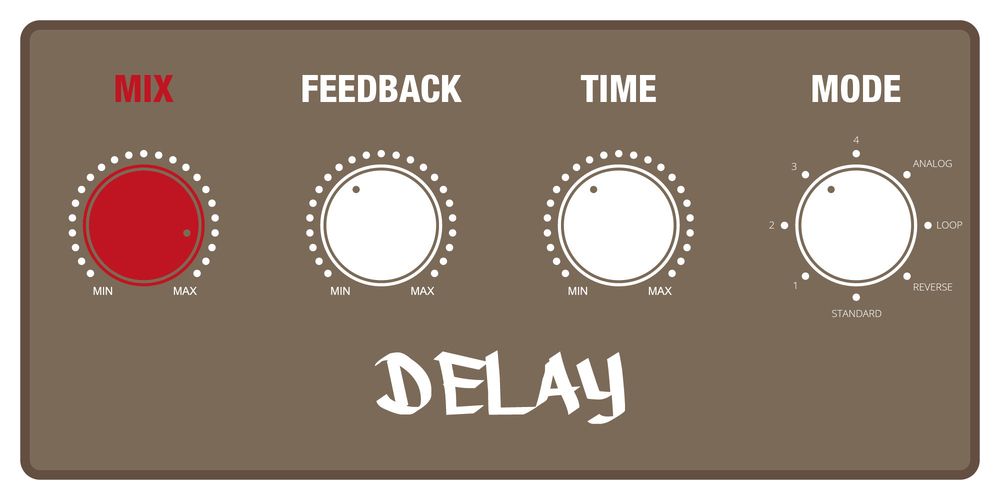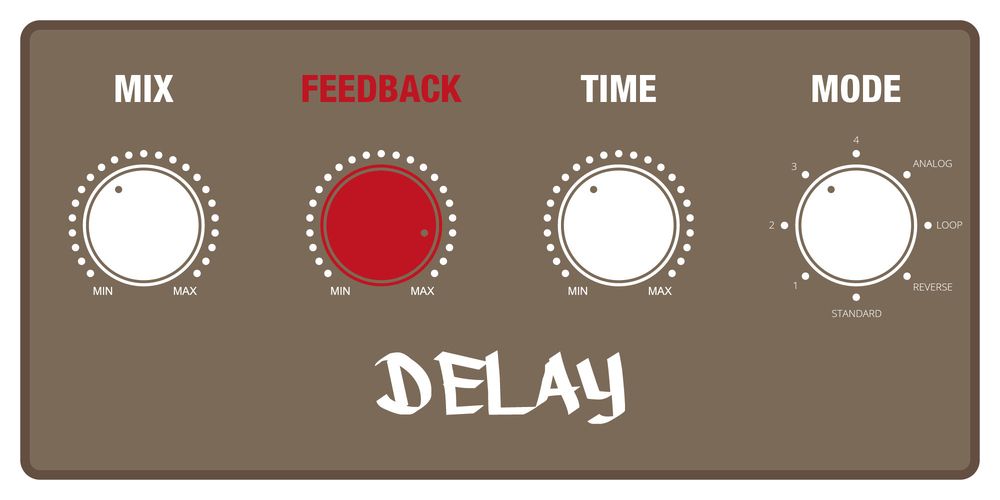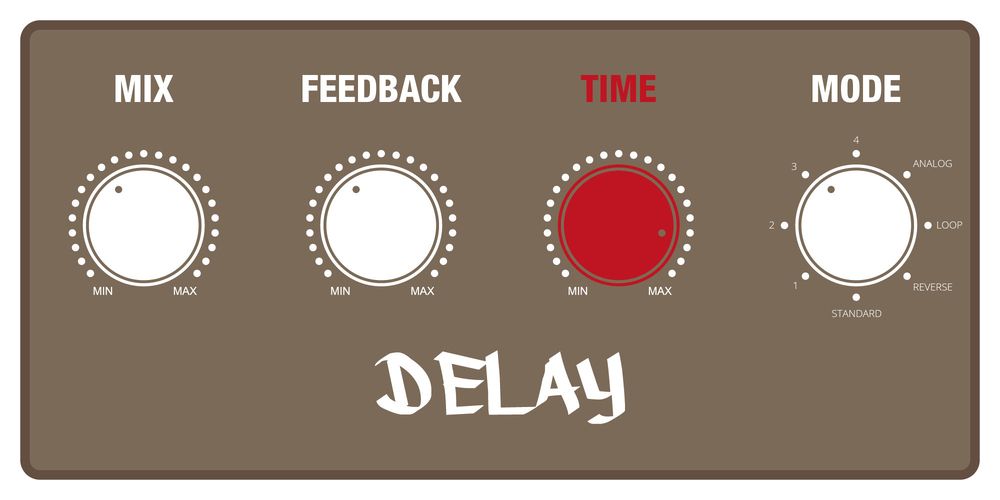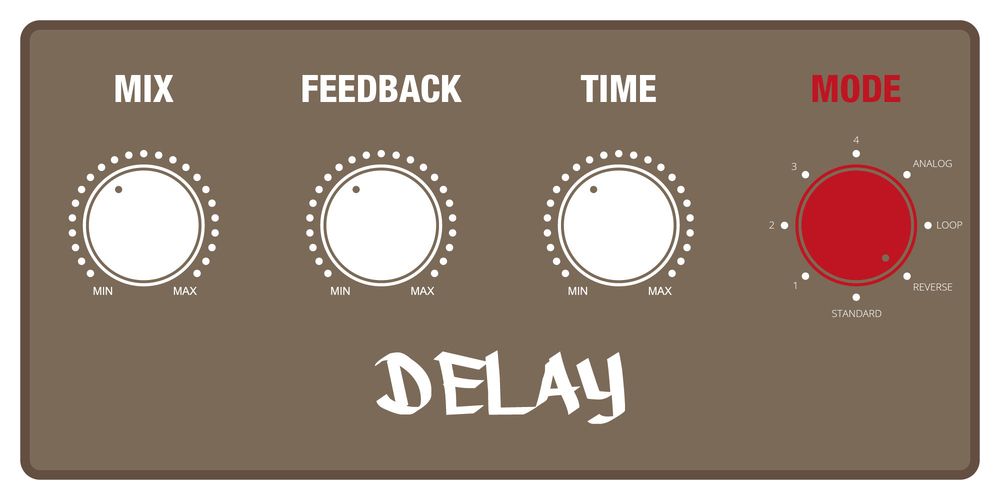5. Adjustable Parameters/Controls
Especially modern delay or echo effect devices can be fine-tuned to match your taste and specific use case. Here are the most important adjustable parameters.
Mix

Mix
Mix refers to the balance between the original signal and the echo repetitions. The further you turn up the knob, the higher the proportion of the effect signal. Normally, at a knob position of 12 o'clock, the mixing ratio is equal (50% original - 50% effect).
Feedback

Feedback
This controls the number of echo repetitions. With high values, there can be a "build-up" of echo repetitions, which is also known as a feedback loop.
(Delay-)Time

Time
The delay time of the echo repetitions is set either in milliseconds or - with delays featuring tap function - in note values, which is naturally much more musically usable. You tap the tempo of the song with your foot, and the delay adjusts accordingly, providing echo repetitions in the selected note values (eighth notes, quarter notes, dotted eighth notes, etc.).
Modulation

Mode
The modulation control determines the amount of modulation effect on the echo repetitions. This allows you to create the popular chorus-like sound of analog delays or tape echoes with tempo fluctuations. With some delays, you can even regulate the modulation speed with Speed and the modulation depth, i.e., the degree of detuning, with Depth.
High Cut/Low Cut
High frequencies are reduced with High Cut, and low frequencies with Low Cut. For tape echo or analog delay sounds, it's recommended to slightly reduce the highs to make the echo repetitions sound duller. This is also a good trick if you've set the effect signal quite prominently: By lowering the highs on the echo repetitions, the original signal stands out better.
Drive
Even with delay, there's distortion. Drive mimics the sound of an overdriven tape echo. Here, too, the distortion is only added to the effect signal.






